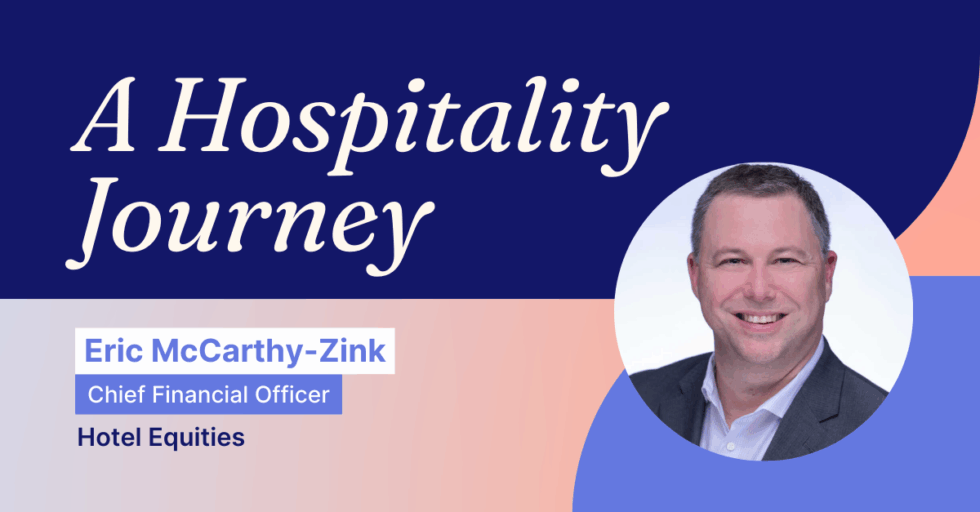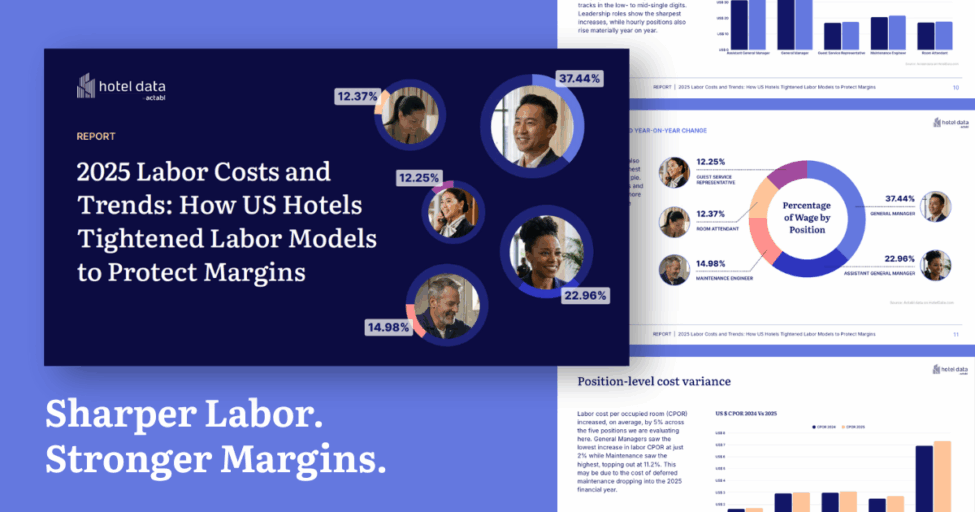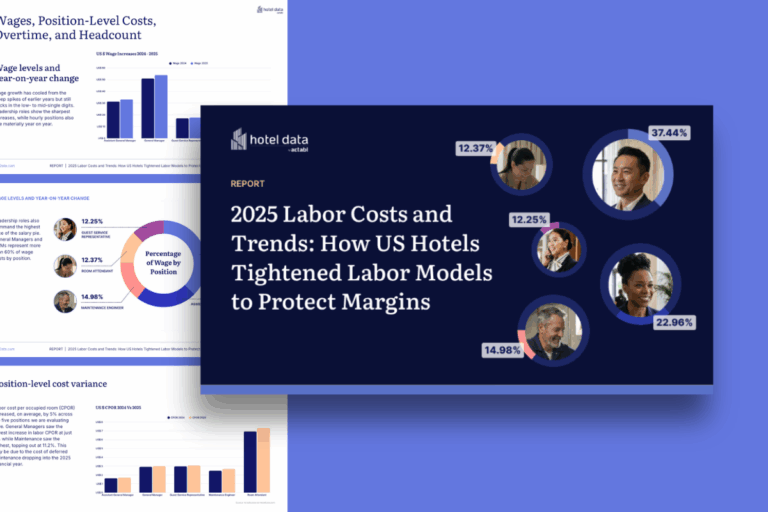
Hotel Data Conference 2025: Labor Management Takes Center Stage
At this year’s Hotel Data Conference in Nashville, one theme cut through the economic forecasts, RevPAR revisions, and market bifurcation debates: how hotels manage labor will define profitability in the next 12–24 months.
A Profit Squeeze That Starts in the P&L
STR’s Amanda Hite and CoStar’s Jan Freitag set the stage in the opening session: 2025 RevPAR forecasts have slipped into negative territory (-0.1%), and the top line is essentially flat. Meanwhile, everything in the P&L is getting more expensive, especially labor. Even in markets with healthy demand, wage hikes, labor shortages, and productivity constraints are tightening the squeeze.
"I'm sorry to say, we've seen the best this year. The second half of the year is going to be tough. The next six months are really going to be rocky and probably not feel so great, because we saw the bulk of our growth in the first half of the year," Hite said.
Jan Freitag drove the point home as he talked through GOP projections. GOP% is expected to drop from 36.0% in 2024 to 34.8% in 2025 as expenses rise. When revenue is stagnant, rising labor costs translate directly into margin erosion, he pointed out. For operators, this makes labor management not just an HR issue, but a strategic financial imperative.
Operational Discipline
On the Forecast Panel, Crescent Hotels & Resorts President Dawn Gallagher and Hotel Equities CEO Ben Rafter both emphasized that in soft markets, operational discipline is non-negotiable.
- Dawn Gallagher stressed breaking down silos between operations and commercial teams to protect service levels while controlling costs. Poor service drives expensive customer acquisition efforts, costs that can be avoided if labor is deployed smartly.
- Ben Rafter noted that in certain markets, wage floors make it “impossible” to protect profitability without the use of labor optimization tools. In Los Angeles, for example, minimum wage for hotel workers is $38.25/hour, and productivity caps on square footage per shift create a steep operational challenge.
Both leaders pointed to labor optimization tools as a game-changer: scheduling with efficiency, predicting demand, and aligning staffing to real-time occupancy forecasts. Gallagher called this a “must-have” for budgeting season; Rafter suggested the savings could be in the millions.
Budget Season Reality
Heading into 2026, the panel agreed that budgets can’t rely on top-line rescue. Instead, owners and asset managers will expect operators to find margin in the middle of the P&L. That means:
- Labor management platforms to align staffing with demand down to daypart and segment.
- Market-specific forecasting that accounts for local wage laws, productivity constraints, and competitive pressures.
- Cross-training to increase flexibility and cover fluctuations without overstaffing.
- Commercial alignment so sales and marketing efforts support operational realities.
Gallagher put it plainly: “We have to be able to say, as a company, ‘We're focused on labor management through using this labor tool.’ We have to look at those technology gains that allow us to reduce the margins and drive more profit."
Rafter agreed: “Now, you can’t really erode rate any further and still operate profitably… so we’re getting more aggressive with labor tools.”
Optimize Labor to Push Profitability
The ‘Perfect your Profitability Playbook’ session, also on Day One of HDC, saw industry leaders again grappling with the topic of labor optimization as one of the most effective ways to boost hotel profitability. The session opened to news that labor costs now account for 37% of total expenses and LPOR has risen nearly 10% year-over-year.
Kristie Dickinson, Managing Director / EVP of CHMWarnick, emphasized balancing contract labor with cross-training to increase flexibility and prevent burnout, while Christopher Ellison, VP of Revenue at Brittain Resorts, highlighted the importance of aligning staffing models to guest priorities so teams can focus on delivering value where it matters most.
Panelists agreed that leveraging labor management technology, combined with weekly forecasting and dynamic scheduling, can reduce labor waste without sacrificing service.
As Robert Morse, VP of Revenue Management, Hotels and Resorts, Davidson Hospitality, noted, the most profitable hotels take a creative, data-driven approach that not only controls costs, but also supports ancillary revenue, keeps ownership aligned on strategy, and positions properties to capitalize quickly when demand rebounds.
At HDC 2025, labor management emerged not as a back-office function, but as a frontline strategy. The hotels that master tech-optimized labor planning, integrate it with commercial strategy, and maintain service quality will be the ones telling a growth story when the cycle turns in 2026.
As Gallagher summed it up: “This is a different cycle than we’ve been in. Owners are carrying debt longer, costs are higher, and forecasts keep slipping. Labor tools aren’t optional, they’re survival.”
See how operators such as Hotel Equities are using Hotel Effectiveness to align staffing with demand and turn labor management into a profit driver.





